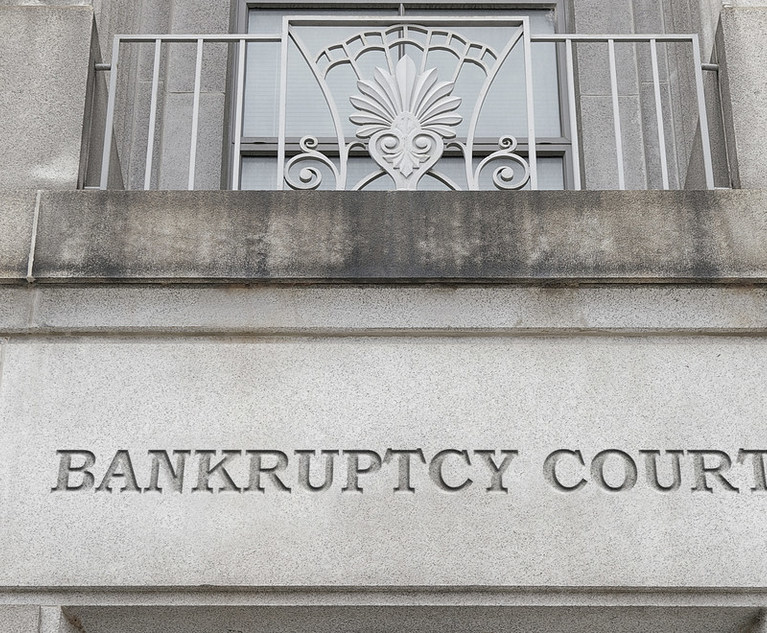The coronavirus pandemic has shaken the U.S. economy, and its effects will be felt for years to come. Retail, entertainment and hospitality have been hit particularly hard by government-mandated shutdowns, changing consumer behaviors and shifts in spending. For many, the road ahead will end in, or lead through, bankruptcy. Bankruptcy law has a language of its own, making it challenging to navigate the process for everyone involved, including for the landlords of bankrupt businesses worried about missing rent payments.
As a start, those landlords should understand these ten concepts:
- Automatic Stay. A bankruptcy triggers a stay of nearly all acts against the debtor, including the filing of eviction actions and even a notice of default. Violators of the automatic stay can be held liable for damages to the debtor, including punitive damages if the violation is deemed willful.
- Pre-Petition Rent. The date of the bankruptcy filing is an important cleavage point for landlords of the debtor because any rent that is past due on this date is treated differently from rent that accrues after this date. This amount will be treated differently depending on whether the lease is assumed or rejected, discussed below.
- Post-Petition Rent. If the tenant remains in the leased premises during the bankruptcy, the Bankruptcy Code requires the debtor to stay current on rent that becomes due after the petition is filed, at least until the lease is assumed or rejected. Outside of a global pandemic, a tenant must pay to stay in the leased space. But these are not normal times: Some bankruptcy courts (and recent COVID legislation) have allowed debtors to remain in the rented premises without paying rent while also blocking the landlord from regaining its premises. Post-petition rent is entitled to be paid in a higher priority than other claims. So, if the debtor is not making payments, the landlord can file an administrative expense claim for the post-petition rent.
- Stub Rent. Odds are the filing is not the same day as rent comes due. In fact, some tenants wait to file their bankruptcy case until mid-month by design. “Stub rent” refers to the prorated amount for the period between the filing and the next rent due date. Depending on the jurisdiction, landlords can seek an administrative claim for this amount as well.
- Proofs of Claim. Generally, a landlord files a proof of claim to preserve its demand for the amount owed by the debtor. A proof of claim is an official form, and the landlord must attach the applicable lease and other support demonstrating how it calculated the amount due. The debtor can review the claim filed and object to it if the debtor does not agree.
- Rejection of the Lease. If the debtor commercial tenant’s lease is unexpired, the debtor will have to decide whether to assume or reject the lease. Some tenants looking to unprofitable locations will make this election immediately or soon after the bankruptcy filing. If no election is made within 120 days of the bankruptcy filing (unless extended by court order), the lease is deemed rejected. Rejection of the lease means the debtor must surrender the premises voluntarily to its landlord on a date certain. At that point, the landlord can enter the premises, rekey it as needed, remove façade signage and proceed to release it.
- Rejection Damages. The rejection of a lease by a debtor tenant is a breach of the lease, entitling the landlord to damages; however, the Bankruptcy Code limits damages to one year’s rent plus pre-petition rent in most cases. Rejection damages claims generally include all pre-petition rent, any accrued but unbilled charges (like year-end adjustments), and one year of rent remaining on the lease term. Landlords should consider their security deposits or letters of credit in preparing these claims.
- Assumption and Adequate Assurance of Future Performance. The tenant debtor can seek to assume the lease for itself, if the goal of the bankruptcy is a reorganization, or to assign the lease, if a sale is contemplated. In either case, the tenant or assignee must promptly “cure” all obligations under the lease (including past-due rent, pre- and post-bankruptcy filing as well as any non-monetary defaults) in order to assume the lease. Further, the debtor or the buyer, must also provide “adequate assurance of future performance” to the landlord showing debtor/buyer can perform under the lease going forward. Landlords can object to an assumption of the lease, as well as object to the debtor’s proposed cure figures.
- Shopping Centers. Tenant debtors seeking to assume shopping center leases have a heightened burden. Here a debtor must provide adequate assurance of the source of future payments to the landlord, that percentage rent (like additional rent based on the tenant’s sales) will not decline substantially, and that the assumption will not disrupt the landlord’s tenant mix or violate exclusive use/restrictive use type agreements. In case of an assignment, the proposed new tenant’s financial condition and performance must be similar to that of the tenant when it originally signed the lease.
- Chapter 11 Plans. A debtor enters Chapter 11 generally to reorganize its business, sell the business as a whole, or sell the business in pieces. The debtor’s selection of path is memorialized in a Chapter 11 plan, which is then voted on by the creditors. Often in retail cases, debtors choose to sell their operations to a buyer who then decides whether to assume or reject a lease with a landlord.


 L-R Stephanie Lieb of Trenam Law and Alexander Zesch. Courtesy Photos
L-R Stephanie Lieb of Trenam Law and Alexander Zesch. Courtesy Photos




